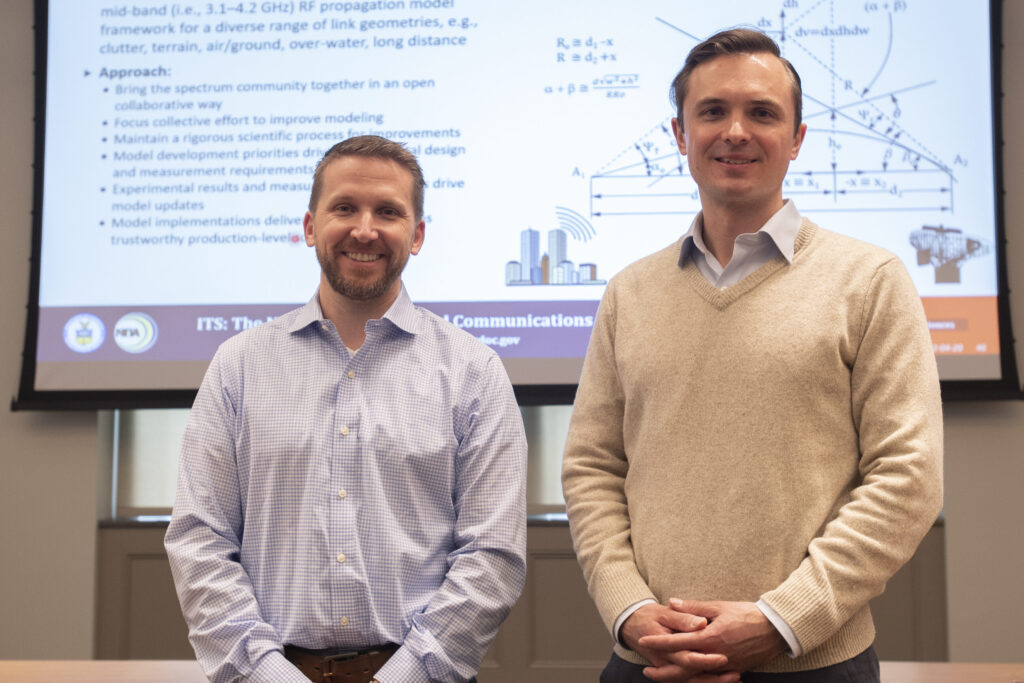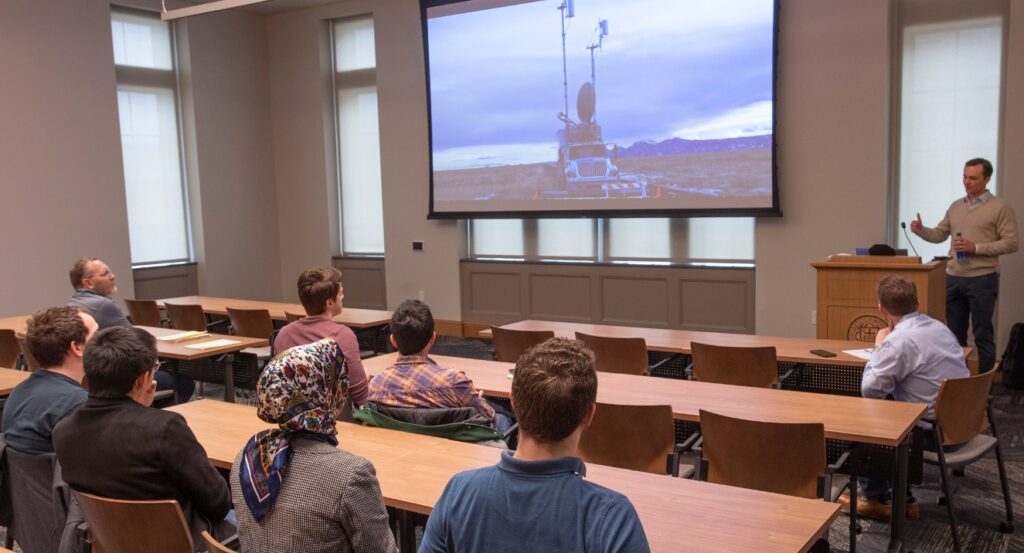Wireless Institute Seminar Series Hosts Charles Dietlein
July 12, 2022
Recently, Charles Dietlein, Senior Research Engineer at National Telecommunications and Information Administration’s Institute for Telecommunication Sciences (NTIA ITS), presented “RF Interference Analyses – Overview and Future Directions” as part of the Wireless Institute Seminar Series at Notre Dame.
Dietlein is a friend and colleague of Professor Chisum, who is an Electrical Engineering faculty member and an active member of the Wireless Institute. Both received their Bachelor’s degrees at Seattle Pacific University, then their M.S. and Ph.D. degrees from the University of Colorado at Boulder. After receiving his Ph.D. Dietlein joined the National Institute of Standards and Technology (NIST) in Boulder, Co, where he contributed to the development of the world’s first real-time passive millimeter-wave/terahertz camera and the world’s first traceable source of millimeter-wave and terahertz power.

From 2010 to 2021, he held several positions with the Department of Defense in Washington D.C. Charles was Chief of Research and Development at the U.S. Air Force Analysis Support Office. He received the U.S. Air Force Exemplary Civilian Service Award for his accomplishments during a detail with the Defense Technology Integration Program Office.
He was the architect and program manager for an advanced reconfigurable hardware-in-the-loop radar and communications electronic warfare emulation environment. It enables applied research in adaptive and cognitive RF technologies at low technology readiness levels while considering highly-realistic electromagnetic and operational environments.
Here is an excerpt from his presentation’s abstract:
- He reviewed fundamental elements of interference analyses, including models of transmitters, receivers, antennas, propagation channels, interference protection criteria, signal processing, and scenarios.
- He discussed several real-world example problems, highlighted how these model components can be combined for use in high-fidelity simulations, and answered questions about system performance in hypothetical scenarios.
- Finally, he explored future research directions in interference analyses, including model standardization, realism, and how to improve statistical descriptions of harmful interference.

